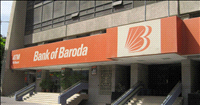Bureau of Indian Standards
By S Lakshmi Narasimhan | 30 Aug 1999
The Bureau of Indian Standards was set up after the enactment of the Bureau of Indian Standards Act, 1986. It operates a product certification scheme, and has till date granted more than 30,000 licences to manufacturers covering a whole lot of industries ranging from agriculture to textiles to electronics. The certification entitles licensees to use the ISI Mark, which is considered the symbol of quality in India.
The predecessor to BIS was the Indian Standards Institution which began operating the product certification scheme in 1955. Presently about 13,000 licences are in operation covering about 1,000 products.
System of certification
The BIS product certification scheme is voluntary in nature, and is based on the International Standards Organisation (ISO) Guide 28, which provides general rules for determining conformity with product standards through initial testing, quality assessment, and sampling in the factories and in the open market. All BIS certification is carried out on Indian standards, which have been found amenable to product certification. A sizable number of Indian standards have however, been framed according to ISO/IEC (International electrotechnical commission) standards and some are dual numbered as IS/ISO or IS/IEC standards.
A large number of operational elements of the BIS product certification scheme correspond with the requirements of ISO Guide 65.
Licensing types
The government of India has enforced mandatory certification of 135 products. Under separate arrangements with statutory agencies some products have been placed under special certification schemes of lot or batch inspection, carried out by BIS inspecting officers. For instance, most gas cylinders and valves are certified through such schemes. Under an agreement with United Nations Children's Fund, deepwell hand-pumps, a critical potable water supply source for rural areas is also licensed under a lot inspection scheme.
For all other products, manufacturers are permitted to self certify products after ascertaining their conformity to the standard licensed for. BIS maintains a close vigil on the quality of goods so certified. It also sub-contracts certification surveillance activities to agencies in specific areas such as steel products, rubber products and electronic products.
Areas of opertions
The BIS product certification scheme is open to manufacturers in all countries, though overseas certification is carried out after the signing of an agreement with the respective countries.
While a licence can be granted for any Indian standard specifying product characteristics, which is amenable to certification, the broad areas of technologies now under certification are:
- Agriculture, food, beverages and tobaccos
- Automotive components
- Basic metals and fabricated metal products
- Building materials
- Cement and concrete products
- Chemicals and Pesticides
- Electrical, electronics and optical equipment
- Leather products
- Machinery and equipment
- Paper and pulp products
- Pumping, irrigation, drainage and sewage equipment
- Rubber and Plastic products
- Testing instruments
- Textiles
- Wood products
Operating principles
BIS claims that its product certification scheme operates in an impartial, non discriminatory and transparent manner. The documents stating the powers, rights and responsibilities of BIS and the affected sectors of society are published by the government of India as the Bureau of Indian Standards Act, 1986, Rules and (certification) Regulations, 1988.
A compilation of these, together with the licensing procedure has also been published by the BIS and can be purchased for Rs.25 from the following address:
The Director (Sales),
Bureau of Indian Standards,
9 B.S.Zafar Marg,
New Delhi - 110 002
The specific rules for operating a licence are given in a 'scheme of testing and inspection document.
Operational procedures provide for maintaining a very high degree of confidentiality and integrity among its personnel who perform certification and related tasks. An external certification advisory committee from varied sectors like manufacturers, consumers, government agencies and industry associations, reviews the performance of the scheme and advises on key policy issues. Internally, a senior functionary designated as additional director general (marks) is responsible for ensuring that the scheme operates within the framework of rules and procedures established.
Resources for BIS
BIS is self-funded. Its certification operations account for more than 80 percent of its revenue. The BIS employs engineers, scientists and statisticians who are trained in evaluation and assessment techniques.All preliminary and surveillance inspections are carried out only by such personnel. BIS has set up eight laboratories in different cities of the India for testing samples of products taken during preliminary and surveillance operations. In addition, independent laboratories that have demonstrated capability to undertake quality tests so as to comply with ISO Guide 25, have been recognised for testing of samples drawn.
The certification scheme operates through a network of 17 branches and 5 regional that oversee the work of the branches.
What are the prerequistes for granting a licence?
Application: The procedure for grant of BIS certification marks licence begins with filing of the application in the prescribed application form - form 1. The form along with an application fee of Rs.1,000 is required to be submitted to any of the branches under whose jurisdiction the manufacturing unit is located.
Overseas applicants may approach the Director, central marks department at BIS head quarters in New Delhi.
Along with the application form, the following additional documents also have to be submitted:
- Location map of factory and factory layout
- Documentation authenticating the premises of manufacture
- Lists of manufacturing equipment and testing facilities available
- Scheme of testing and inspection in use or proposed to be used in future. An undertaking to follow the scheme approved by BIS after grant of licence for testing and inspection
- An undertaking to pay the prescribed marking fee from the date of grant of licence
- An undertaking to follow all terms and conditions of grant of licence and to suspend marking with immediate effect in the event of suspension or cancellation of licence
- A flow chart describing the sequence of production and inspection stages
Registration: Once an application is found complete in all respects, it is recorded and assigned a registration number, acknowledged and the applicant is informed of the registration number.
What's done during preliminary inspection?
On a mutually agreed date, a preliminary inspection is called within a month of registration. This inspection includes:
- the firm's manufacturing capability
- quality control techniques used
- facilities available
- the technical skills of the personnel
- testing of product samples in BIS or in other independent laboratories
Preliminary visits are charged to the applicant at a uniform rate of Rs 2,000 per day. Generally, inspections are completed within one day. Testing charges have to be paid by the applicant as per the laboratories' rate schedules.
What is the 'Scheme of Testing and Inspection'?
The scheme of testing and inspection (STI) is a document which specifies the control over production process which the firm is required to exercise for operating the certification marks licence. This is prepared by the BIS in consultation with the first applicant for the product. For subsequent applications, the applicability of the available STI is reviewed and changes made if necessary.
The STI contains:
- Markings to be applied on the product and the method of applying the Standard Mark
- Definition of control unit
- The levels of control to be applied
- acceptance criteria, control unit wise
- Frequency of sampling and tests on raw materials, in process materials and finished products
- Directions to licensees in event of quality related problems
- A clause requiring free replacement of goods in case a complaint is established bonafide.
Granting of a licence: A licence is granted to the applicant if results of preliminary inspection and independent testing are satisfactory, and the applicant has paid the advance minimum marking fee. The initial validity of the licence is for one year, which can be extended on application for further periods of two years at a time, subject to satisfactory operation of the licence.
The scope of a licence can be extended at any time by adding more varieties covered by the Indian standard, after due testing.
Marking fees: A schedule has been drawn giving the marking fee rates for each product. The marking fee comprises a fixed element, which is the minimum amount payable per annum. A unit rate is also chargeable concurrently on the quantum of production marked. If the amount calculated on unit rate basis exceeds the minimum marking fee, that amount becomes chargeable.
Controls over licensees: After the grant of licence, the manufacturer is authorized to mark his products on condition that he implements the STI fully, his products conform to the Indian standard and he maintains a record of tests carried out.
Post certification controls are exercised through surveillance inspections at the licensees unit periodically. During these inspections, thorough technical auditing of the quality control system is carried out with reference to the STI document. Samples of current production are tested, and also drawn for testing in BIS or independent laboratories. Additional controls are also done through testing of market samples.
The results of inspections and product testing are communicated to the licensee with suitable advices. Companies can be barred from marking if constant deficiencies are observed. Licence is renewed at the end of its validity after a review of past performance.
A licence can be suspended or cancelled following serious discrepancies, particularly if the product does not conform to the Indian standard.
OTHER PRODUCT CERTIFICATION SCHEMES
Besides the normal product certification scheme, BIS also grants licences to environment friendly products under a special scheme and awards the 'eco mark' to such products. These products should conform to additional requirements specified in the Indian standards to qualify.
BIS is a national certifying body ( issuing and recognising ) under the IEC System for conformity testing and certification of electrical products (IECEE). The Product categories for which BIS has IECEE acceptance are: Cables and Chords; Capacitors as components; Low voltage high power switching equipment; Installation protective equipment; Electronics and entertainment.
BIS is the national authorised institution and the national standards organisation under the IEC system of quality assessment of electronic components (IECQ ).
BIS acts as the surveillance agency for certifications granted by Canadian standards association (CSA) and South African bureau of standards in India.













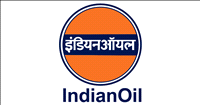
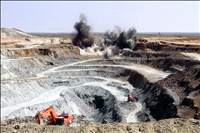

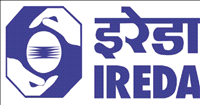
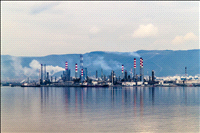
.jpg)
